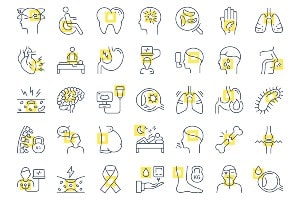About CT Colonosopy (Virtual Colonoscopy)

Learn about the disease, illness and/or condition CT Colonosopy (Virtual Colonoscopy) including: symptoms, causes, treatments, contraindications and conditions at ClusterMed.info.
CT Colonosopy (Virtual Colonoscopy)

| CT Colonosopy (Virtual Colonoscopy) |
|---|
CT Colonosopy (Virtual Colonoscopy) InformationComparing virtual colonoscopy and traditional colonoscopy
My personal approach to recommending virtual versus optical colonoscopies
What is colonoscopy?Colonoscopy is a procedure that enables an examiner (usually a gastroenterologist) to evaluate the appearance of the inside of the colon (large bowel). This is accomplished by inserting a long flexible tube (the colonoscope) that is about the thickness of a finger into the anus and then advancing the colonoscope slowly into the rectum and through the colon. The tip of the colonoscope has a light and a video camera. The inner colon lining can be directly visualized in images transmitted from the camera to a television monitor. This traditional method of examination of the colon is called optical colonoscopy or, more commonly, just colonoscopy.In preparation for colonoscopy, the day before the examination the colon is emptied using laxatives. Immediately prior to colonoscopy, an intravenous infusion (IV) is started, and the patient is placed on a monitor for continuously monitoring the rhythm of the heart, blood pressure, and the amount of oxygen in the blood. Medication usually is given by IV to make the patient sleepy and relaxed. If needed, the patient can receive additional doses of medication during the procedure. Colonoscopy often gives a feeling of pressure, cramping, and bloating; however, with the aid of the medication, colonoscopy generally is well tolerated and infrequently results in significant pain. The type of anesthesia caused by the intravenous medications is classified as conscious sedation and is safer than general anesthesia. With conscious sedation, patients are sleepy but still arousable, and able to breathe on their own. After the colonoscopy, patients are asked not to drive for the rest of the day if medications for conscious sedation were given.Should there be polyps (benign growths that can lead to cancer) in the colon, the polyps, almost always can be removed through the colonoscope. Removal of these polyps is an important method of preventing colorectal cancer. What is virtual colonoscopy?Virtual colonoscopy is a technique that uses a computerized tomographic (CT) scan (a type of three-dimensional x-ray) to construct virtual images of the colon that are similar to the views of the colon obtained by direct observation by optical colonoscopy.In preparation for virtual colonoscopy, the day before the examination the colon is emptied using laxatives in a manner similar to traditional colonoscopy. During the examination, a small tube is inserted into the anus to inject and fill the colon with air. Unlike with traditional colonoscopy, this tube is not advanced into the colon. The CT scan then is performed, and the scans are manipulated by computer software to form virtual images of the colon. When properly performed, virtual colonoscopy can be as effective as routine colonoscopy. It can even find polyps "hiding" behind folds that occasionally are missed by traditional colonoscopy. The scanning takes only 10 minutes, and usually no conscious sedation is necessary.In October, 2007, researchers from University of Wisconsin published in the New England Journal of Medicine a study comparing traditional colonoscopy to virtual colonoscopy. More than six thousand patients over age 50 were evenly divided to undergo either optical or virtual colonoscopy. The researchers found that virtual colonoscopy was as effective as optical colonoscopy in detecting polyps larger than 5mm. |
More Diseases
A | B | C | D | E | F | G | H | I | J | K | L | M | N | O | P | Q | R | S | T | U | V | W | X | Y | Z
Diseases & Illnesses Definitions Of The Day
- Eating, Emotional (Emotional Eating) ‐ Emotional eating facts, How do health care providers diagnose emotional eating? …
- OTC Drugs for Constipation (Laxatives For Constipation) ‐ Are laxatives safe to take during pregnancy or while breastfeeding? …
- Hyopgonadism, Primary (Low Testosterone (Low T)) ‐ How do you know if you have low testosterone (Low-T)?, Should I take testosterone? …
- Poisoning, Ciguatera (Ciguatera Poisoning) ‐ What are the symptoms of ciguatera poisoning?, What is ciguatera poisoning? …
- Head and Neck Cancer ‐ Head and neck cancer facts*, How are head and neck cancers diagnosed? …
- XXY Males (Klinefelter Syndrome) ‐ Klinefelter syndrome facts*, Language development, Physical development …
- Devic's Syndrome ‐ How is neuromyelitis optica diagnosed?, Neuromyelitis optica facts* …
- Myocarditis ‐ How is myocarditis diagnosed?, What are symptoms of myocarditis? …
- Cancer of the Testis (Testicular Cancer) ‐ After testicular cancer has been diagnosed, tests are done to find out if cancer cells have spread within the testicles or to other parts of the body. …
- Chronic Rhinitis ‐ Chronic rhinitis and post-nasal drip definition and facts, Does salt water or nasal irrigation have any role in the treatment of rhinitis and post-nasal drip? …